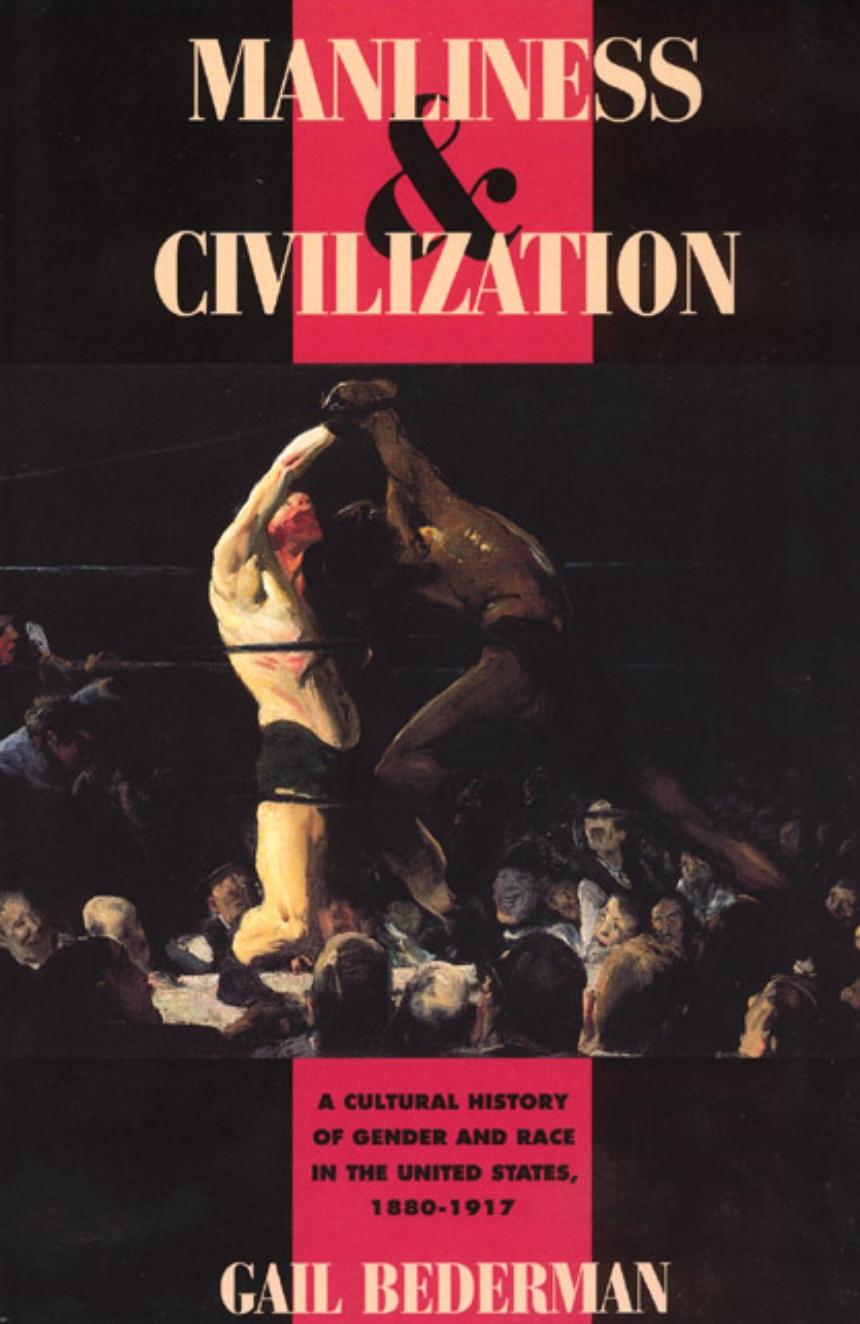Manliness and Civilization
A Cultural History of Gender and Race in the United States, 1880-1917
9780226041391
9780226041490
Manliness and Civilization
A Cultural History of Gender and Race in the United States, 1880-1917
When former heavyweight champion Jim Jeffries came out of retirement on the fourth of July, 1910 to fight current black heavywight champion Jack Johnson in Reno, Nevada, he boasted that he was doing it "for the sole purpose of proving that a white man is better than a negro." Jeffries, though, was trounced. Whites everywhere rioted. The furor, Gail Bederman demonstrates, was part of two fundamental and volatile national obsessions: manhood and racial dominance.
In turn-of-the-century America, cultural ideals of manhood changed profoundly, as Victorian notions of self-restrained, moral manliness were challenged by ideals of an aggressive, overtly sexualized masculinity. Bederman traces this shift in values and shows how it brought together two seemingly contradictory ideals: the unfettered virility of racially "primitive" men and the refined superiority of "civilized" white men. Focusing on the lives and works of four very different Americans—Theodore Roosevelt, educator G. Stanley Hall, Ida B. Wells, and Charlotte Perkins Gilman—she illuminates the ideological, cultural, and social interests these ideals came to serve.
In turn-of-the-century America, cultural ideals of manhood changed profoundly, as Victorian notions of self-restrained, moral manliness were challenged by ideals of an aggressive, overtly sexualized masculinity. Bederman traces this shift in values and shows how it brought together two seemingly contradictory ideals: the unfettered virility of racially "primitive" men and the refined superiority of "civilized" white men. Focusing on the lives and works of four very different Americans—Theodore Roosevelt, educator G. Stanley Hall, Ida B. Wells, and Charlotte Perkins Gilman—she illuminates the ideological, cultural, and social interests these ideals came to serve.
Table of Contents
List of Illustrations
Foreword
Acknowledgments
Ch. 1: Remaking Manhood through Race and "Civilization"
Ch. 2: "The White Man’s Civilization on Trial": Ida B. Wells, Representations of Lynching, and Northern Middle-Class Manhood
Ch. 3: "Teaching Our Sons to Do What We Have Been Teaching the Savages to Avoid": G. Stanley Hall, Racial Recapitulation, and the Neurasthenic Paradox
Ch. 4: "Not to Sex - But to Race!" Charlotte Perkins Gilman, Civilized Anglo-Saxon Womanhood, and the Return of the Primitive Rapist
Ch. 5: Theodore Roosevelt: Manhood, Nation, and "Civilization"
Conclusion: Tarzan and After
Notes
Bibliography
Index
Foreword
Acknowledgments
Ch. 1: Remaking Manhood through Race and "Civilization"
Ch. 2: "The White Man’s Civilization on Trial": Ida B. Wells, Representations of Lynching, and Northern Middle-Class Manhood
Ch. 3: "Teaching Our Sons to Do What We Have Been Teaching the Savages to Avoid": G. Stanley Hall, Racial Recapitulation, and the Neurasthenic Paradox
Ch. 4: "Not to Sex - But to Race!" Charlotte Perkins Gilman, Civilized Anglo-Saxon Womanhood, and the Return of the Primitive Rapist
Ch. 5: Theodore Roosevelt: Manhood, Nation, and "Civilization"
Conclusion: Tarzan and After
Notes
Bibliography
Index
